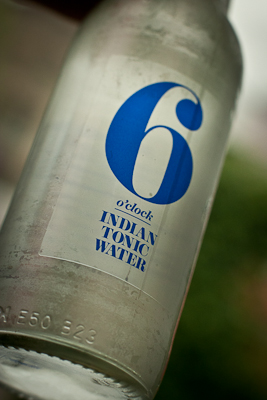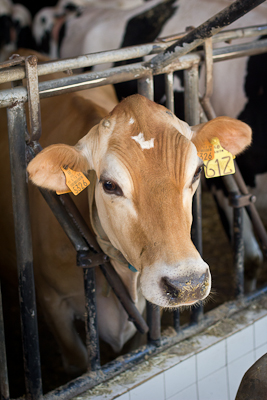This post is part two in a three-post series devoted to the gin and tonic. Part 1 endeavoured to find the best gin. Now, in part 2, the mission is to find the best tonic for gin and tonic…

Some time ago, we had the gigantic joust of the gins. Now, at long last, it’s time for the titanic tiff of the tonics.
Oh, fuck, how much of a wanker does that pair of alliterations make me sound? DON’T ANSWER.
Today’s mission, then, is to find out which tonic makes the best gin and tonic. The deal here was pretty much the same as with the gins: taste ’em blind in one joyously ginny lineup. The gin used was my favourite common brand, Tanqueray.
(When I say common, I don’t mean lower class; I mean the kind of gin you’d be able to find at any half-decent UK supermarket or off-license.)
And I make no apologies for the fact that the lineup includes no slimline tonic varieties whatsoever. Because slimline tonic is the corrosive piss of satan.
Anyhow, here — from worst to best — are the results…
The best tonic for gin and tonic — results
9. Schweppes Tonic Water
Oh Schweppes, oh Schweppes. You fell, my boy. You fell bad. You landed on your arse.
I grew up on Schweppes G&Ts. Since my first mini-fridge at university, I always had a rank of yellow-and-silver mini-cans available, on ice. Alas.
Schweppes came out bottom of the taste test. Not marginally; clearly, and by some distance. It has a back-of-the-throat catch that I associate with artificial sweeteners, and a cheap, metallic quality to it. That said, it does also have bite. And it’s sure as hell better than sodding Britvic, which is a heinous tonic I didn’t even bother to include in this tasting. Compared to other tonics (including all the supermarket brands) it made for a sweeter, blander, more tacky gin and tonic. A saccharine blagger of a tonic, a little too confident that his illustrious background will win your admiration. The kind of tonic who hangs around in Chelsea and talks shit all the time.
I should add, though, that even the Schweppes G&T was nice. I criticise it relative to the others, but, Christ, let’s keep a sense of perspective.
8. Marks & Spencer Tonic Water
M&S only seems to do tonic in big 75cl bottles. A silly omission. In a G&T, M&S tonic is inoffensive. It’s got an unexpected bready sort of quality, but not much bite. It’s refreshing, but rather nothingy. A diffidently pleasant tonic without much to say for himself. Probably enjoys listening to Coldplay.
7. Fever Tree Mediterranean
The first of three Fever Tree variants, this character didn’t combine enormously well with Tanqueray. Like M&S’s effort, it sits toward the inoffensive side of the spectrum. It’s also a tad on the sweet side. A slightly wet ex-hippy of a tonic.
6. Waitrose Tonic Water
A gin and tonic with Waitrose tonic is a balanced sort of affair. It too has a slight breadiness, which I rather like. Again, though, there’s a tendency towards oversweetness — though neither as extreme nor as artificial as that of Schweppes. A balanced, middle-of-the-road kind of tonic. Squarely a Radio 2 listener.
5. Fever Tree Naturally Light
Nice. The gin and tonic made with Fever Tree Naturally Light — perhaps unsurprisingly — was less tonicky than most. With a bolshy, no-nonsense gin like Tanqueray, that’s not particularly necessary, but for the more subtle, aromatic, delicate gins (Greenalls Bloom, for instance, or Hendricks), this would be rather a splendid thing. A sensitive, quietly-spoken tonic; a good listener.
 4. Fentimans Tonic
4. Fentimans Tonic
Here’s where things start to get interesting. Fentimans makes for a damn good gin and tonic. It’s crammed with flowers (violets!) and citrus. I’d gleefully drink this tonic on its own; in many ways it has more in common with something like bitter lemon than what I think of as tonic — there’s so much goddamn fruit in there. The gin and tonic it makes is delicious, lemony, full of zing and zang. But, I have to say, it’s nothing like my idea of a classic gin and tonic. An unabashed attention-seeker — the kind of tonic that ignores the dress code — but you can’t help liking it, nevertheless.
3. Sainsbury’s Tonic
Wow. This one came in from left-field. The coveted Old Parn Value Award goes to Sainsbury’s for this fantastically strapping tonic. Savoury, bready, confident. Really far in excess of my expectations of a supermarket own-brand tonic, it’s a diamond in the rough — a good looking charmer in a down-at-heel nightclub.
2. Fever Tree Regular
Yup. It’s good. It’s very good. This is Fever Tree’s most successful tonic for a straightforward G&T. It’s balanced and rather delicious. What keeps it from topping the poll is a slight oversweetness. Far less pronounced than elsewhere, but I’d still prefer a bit less sugar; a bit more bite. Nevertheless, a very fine tonic indeed. Generous, charismatic and considerate.
 1. 6 o’Clock Tonic
1. 6 o’Clock Tonic
And, finally — just sneaking in ahead of Fever Tree — comes 6 o’Clock Tonic. This is goddamn outstanding. A pity it’s a bugger to find (I’ve so far only been able to locate it in Whole Foods and online), because it has everything I want in a tonic water (including pleasantly minimalist packaging design). Why do I like it? Because it’s dry, it’s grown up. There’s a leafiness to it, a sharp, bracing sting. It’s not even slightly confected, not sugary or patronising. Set a gin and 6 o’Clock Tonic alongside a gin and Schweppes tonic and compare the two. You will be astonished at the difference — at how facile and glib the Schweppes one tastes.
A self-confident tonic with a dry wit and fucking excellent style — and deservedly crowned Old Parn’s best tonic for gin and tonic.



































